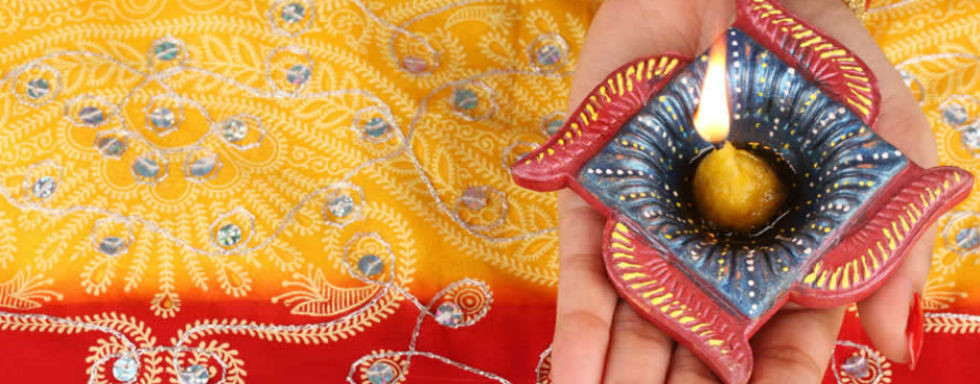Goddess Lakshmi, the consort of Vishnu, is the most sought after Goddess of India. She is the ruler of the eight kinds of wealth. It is said that the household where she is not worshiped will never prosper. Dhana Lakshmi for wealth is the most worshiped. Vidya Lakshmi is worshiped for knowledge, Santana Lakshmi is worshiped for children, Vijaya Lakshmi is worshiped for victory in undertakings & court cases, Dhanya Lakshmi is worshiped by the farming community and Soubhagya Lakshmi is worshiped of marriage and happy married life. It is performed normally on a Thursday or Friday. The shodasopachara pooja is performed with the prescribed materials, 1008 Lakshmi Namavali and Sri Sooktam are recited. It will be done in your name with the specific sankalpa.
October 2007
4 posts
The name Kali derives from the Sanskrit root word Kal meaning time. Nothing escapes from time. Her Tibetan Buddhism counterpart is named Kala, a male figure. Of the Hindu goddesses, Goddess Kali Ma is the most misunderstood. The Encyclopedia Britannica is very mistaken in this quote, "Major Hindu goddess whose iconography, cult, and mythology commonly associate her with death, sexuality, violence, and, paradoxically in some of her later historical appearances, motherly love."
It is partially accurate to say the Goddess Kali Ma is a goddess of death. However, She brings the death of the ego as the delusional self-centered view of reality. Nowhere in the sriptures is She seen killing anything but demons nor is She associated exclusively with the process of human dying like Yama the Hindu god of death. Both Goddess Kali Ma and Shiva are said to inhabit cremation grounds and devotees often go to these places to meditate. The purpose is not to glorify death but to overcome the I-am-the-body idea. The cremation grounds reinforce the idea that the body is a temporary. Kali and Shiva are said to dwell in these places because it is our attachment to the body that gives rise to the ego. Kali and Shiva give liberation by dissolving the illusion of the ego. Thus we are the ever-existing I AM and not the impermanent body. This is emphasized by the scene in the cremation grounds.
Out of all the Devi forms, Kali is the most compassionate because She provides moksha or liberation to Her children. She is the counterpart of Shiva. They are the destroyers of unreality. When the ego sees Mother Kali it trembles with fear because the ego sees in Her its own eventual demise. An individual who is attached to his/her ego will not be able to receive the vision of Mother Kali and She will appear in a fear invoking or "wrathful" form. A mature soul who engages in spiritual practice to remove the illusion of the ego sees Mother Kali as very sweet, affectionate, and overflowing with incomprehensible love for Her children.
Ma Kali wears a garland made of 52 skulls and a skirt made of dismembered arms because the ego comes out of identification with the body. In fact, we are beings of spirit and not flesh. So liberation can only prevail when our attachment to the body comes to an end. Therefore, the skirt and garland are trophies worn by Her to represent the liberation of Her children from attachment to the finite body. In two of Her hands, She holds a sword and a freshly severed head that is dripping blood. This represents a great battle in which she defeated the demon Raktabija. Her black (or sometimes dark blue) skin represents the womb of the unmanifest from which all of creation is born and into which all of creation will eventually return. Goddess Kali Ma is depicted as standing on a white skinned Shiva who is lying beneath Her. His white skin is in contrast to Her black or sometimes dark blue skin. He is showing a blissful detached look on His face. Shiva is pure formless awareness sat-chit-ananda (being-consciousness-bliss) while She represents "form" eternally sustained by the underpinning of pure awareness.
Deepavali is a festival where people from all age groups participate. They give expression to their happiness by lighting earthen 'diyas' (lamps), decorating the houses, bursting firecrackers and inviting near and dear ones to their households for partaking in a sumptuous feast. The lighting of lamps is a way of paying obeisance to god for attainment of health, wealth, knowledge, peace, valor and fame.
It is one time in the whole year that children volunteer to leave their beds long before the day begins. In fact, the traditional oil bath at 3 a.m, is the only chore that stands between them and the pre-dawn adventures. They emerge, scrubbed clean to get into their festive attire, and light up little oil lamps, candles and scented sticks(agarbathis), the wherewithal for setting alight crackers and sparklers.
Who shall set off the first chain of crackers that go boom, bang and vroom? and who is the owner of the 10-minute 'banger' that steals the thunder from your little chain of needle-sized crackers? Does the boy next door have more crackers than me?
Competition is stiff, and even the little girl in silk frocks and their finery are watching out for the best sparklers and flowerpots, the rockets and Vishnuchakras, which light-up the night sky like a thousand stars. Grown-ups are the soul of generosity. Festive bonhomie abounds.
Diwali 2007 November 09, 2007
| DIWALI CALENDAR 2007 | ||||||
| November 2007 | ||||||
| S | M | T | W | T | F | S |
| 1 | 2 | 3 | ||||
| 4 | 5 | 6 | 7 | 8 | 9 | 10 |
| 11 | 12 | 13 | 14 | 15 | 16 | 17 |
| 18 | 19 | 20 | 21 | 22 | 23 | 24 |
| 25 | 26 | 27 | 28 | 29 | 30 | |
